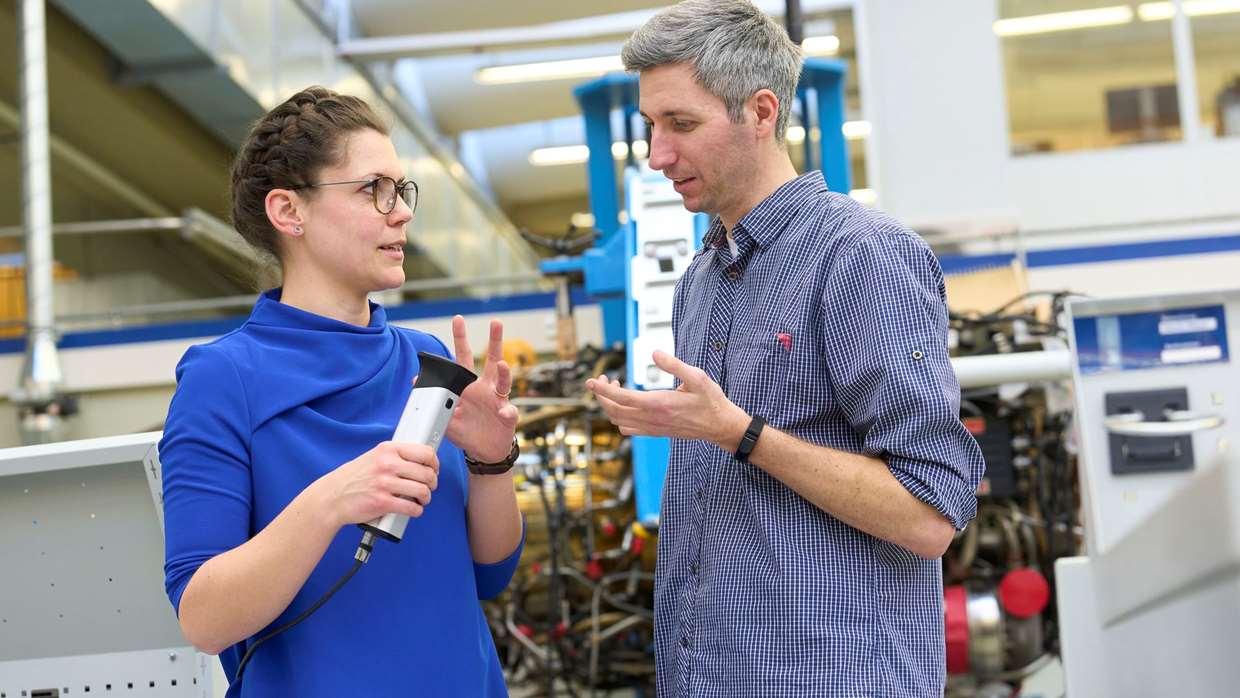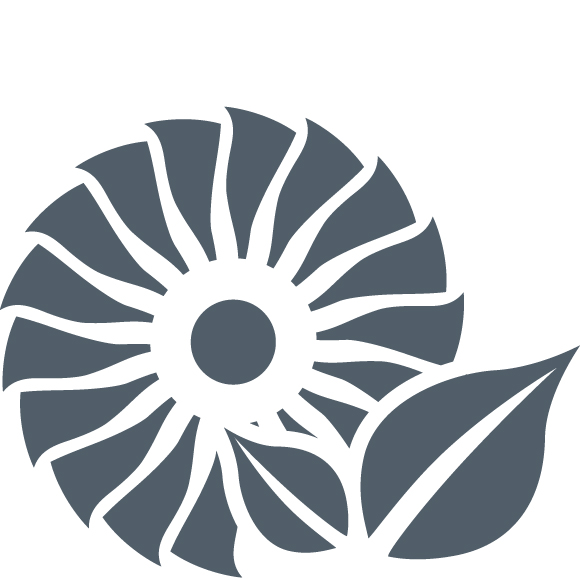Product
Innovations for a sustainable future
Research & development
We are a technology leader in aviation—and it is our extensive research work and high level of innovation that keep us in this top position. Our ideas and concepts aim to transform aviation. With our research and development work, we are playing a key role in realizing a sustainable future for aviation.

MTU employees introduced a new measurement technique in PW1100G-JM final assembly; this engine belongs to the highly efficient GTF family. At MTU, numerous experts work on creating innovations and new solutions for the future.
We are committed to the principle of integrated environmental protection, which takes a precautionary approach to how the company’s products impact the environment and integrates insights from this into entrepreneurial decisions. This applies above all to our research and development work. In the technology and innovation process, our experts investigate environmental and societal driving forces for aviation and take them into account when defining MTU concepts and targets. We receive input for our analyses and stakeholder expectations through various channels as part of our stakeholder dialogue, which we conduct on an ongoing basis with all stakeholders. → More about stakeholder dialogue
Shaping the future sustainably with innovations
MTU manages technology development for future products using a multistage process. In the medium term, advanced product designs are created and technology requirements derived from them. And over the long term, pilot concepts are developed with the help of a technology radar, and the development of enabling technologies initiated. One example of an advanced product design is the next-generation geared turbofan; pilot concepts are the Water-Enhanced Turbofan (WET) and the Flying Fuel Cell. An Innovation Board regularly discusses all topics related to technology and innovation and initiates technology projects and studies. The technology steering committee (TLA) is responsible for MTU’s technology roadmap and is regularly updated on its progress. During the reporting year, MTU realigned its Claire agenda, which was approved by the TLA and thus by the Chief Operating and Chief Program Officers. → For more information, see Climate impact of aircraft engines
The basis of this technology process is our culture of innovation, which we cultivate with a variety of initiatives. These include a Group-wide innovation management concept; the Inno Lab, our creative think tank; and Ideation Challenges, through which we gather and evaluate ideas from employees related to a specific field of innovation.
Our employees have top qualifications in fields as diverse as acoustics, fuel cells, 3D printing and bionics. A total of around 1,000 engineers work at MTU, collaborating with six centers of competence and 16 universities to create new and innovative solutions for the future. Read more in the chapter → Corporate social responsibility. We also achieve our excellent position by patenting our work; at the end of the year, MTU’s patent portfolio contained 2,675 individual patents.
Research and development budget further increased
In the reporting year, MTU invested heavily in sustainable innovation: our investment in research and development (R&D) in 2022 totaled EUR 265 million (2021: EUR 230 million). With our R&D activities, we are actively promoting sustainable, zero-emission aviation while investing in MTU’s future at the same time. R&D activities focused on performance improvements in the geared turbofan programs, technology studies for future generations of propulsion systems with an emphasis on hydrogen and flying fuel cells, and the expansion of capabilities in the area of virtual engines.

We spent 15% more on research and development than in the previous year. These are investments in a green future. One area of focus is to make emissions-free flight a reality.
Strong research network
To sustain MTU’s technological expertise, it is important to be adequately plugged into the research landscape. We maintain a network of some 100 universities, research institutions, and companies around the world. → MTU’s research network MTU is involved in major research programs in Germany (LuFo aeronautics research program) and Europe (such as Clean Aviation) that push the development of ecologically efficient propulsion technologies for aviation. These programs bring together researchers from a wide range of manufacturers, universities and major research institutions.

We have access to a strong network of universities, research institutions and companies and participate in important aviation research programs.
One cutting-edge technology program is the SWITCH project; launched in 2022, it combines MTU’s Water-Enhanced Turbofan with hybrid-electric propulsion elements based on the geared turbofan. In addition, research into green technologies for aviation was further advanced as part of the Federal Aviation Research Program (LuFo) in Germany. Numerous project outlines and projects were approved for MTU concepts in 2022.